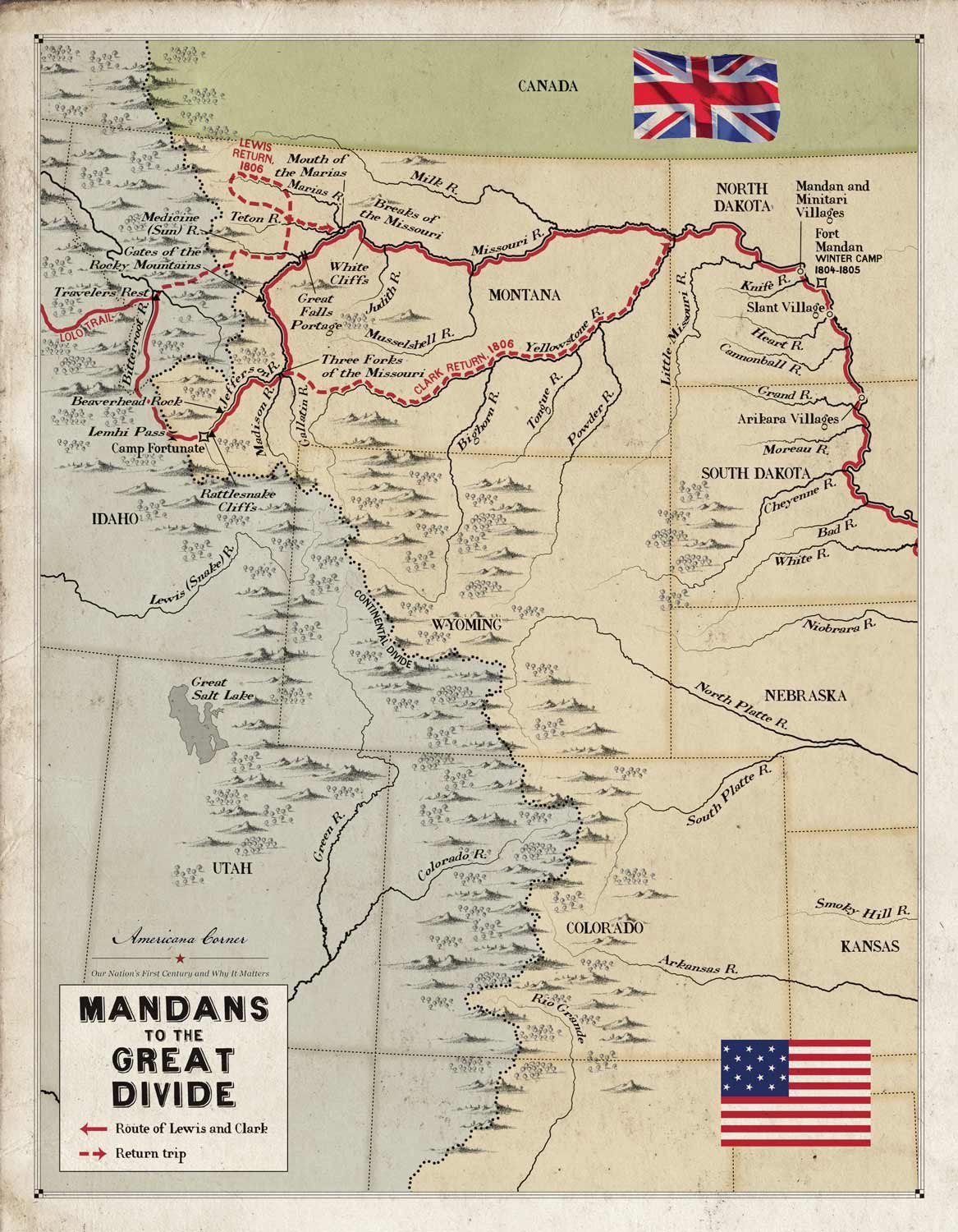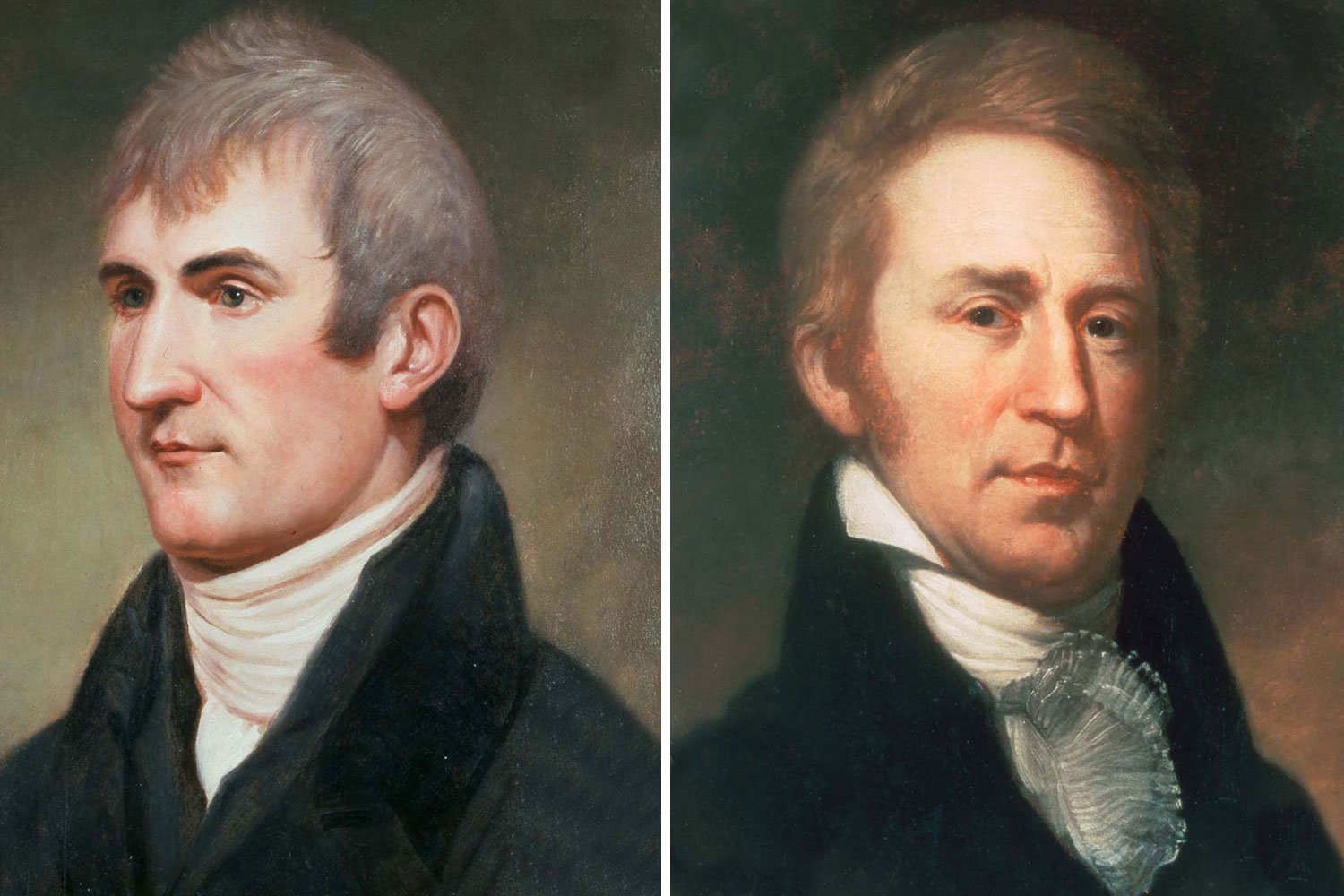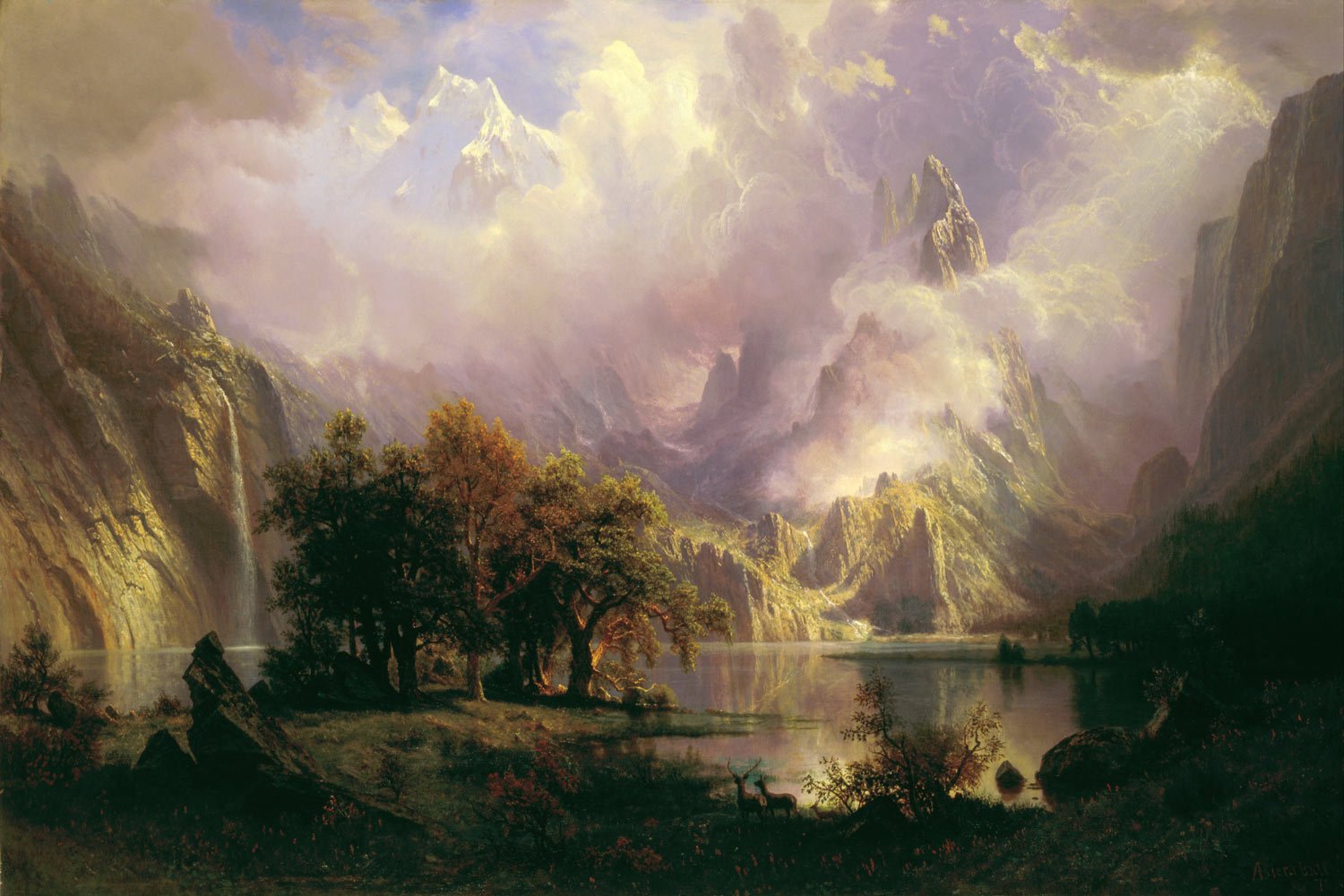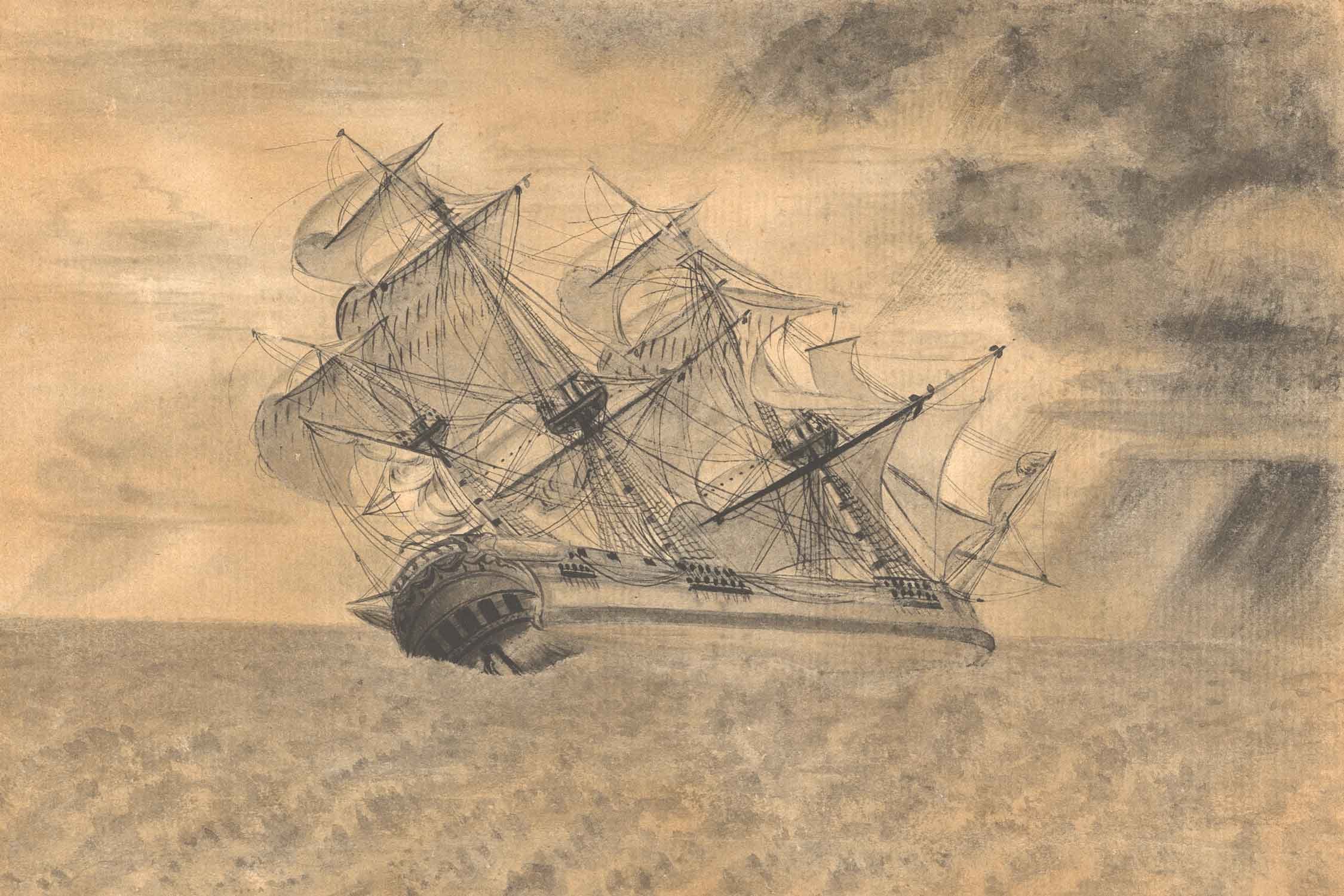Lewis and Clark Expedition, Part 7: Crossing the Great Divide
Upon leaving the Great Falls of the Missouri on July 15, 1805, the Lewis and Clark Expedition began to search in earnest for the Shoshone from whom they hoped to purchase horses for their journey over the Rockies. The next day, Lewis identified an abandoned but recent Shoshone camp with a wickiup and signs of numerous horses, but the Indians remained elusive. The captains decided to split up and have Clark take a detachment ahead while Lewis brought up the boats and the rest of the Corps.
Clark started out on July 18, but after four days of fruitless searching Clark and his men rejoined the main party badly exhausted, with feet chewed up by sharp rocks and prickly pear. After resting for just one day, Clark set out again but returned a few days later with the same results, sore feet and no Shoshone. The men in the canoes were equally worn out as the river was barely navigable and the men spent more time dragging the canoes forward with towropes than they did paddling. Their rendezvous point was the Three Forks of the Missouri, that beautiful area in southwestern Montana where the Jefferson, Madison, and Gallatin Rivers meet to form the Missouri, and that Lewis described as “an essential point in the geography of this western part of the Continent.”
Sacagawea informed the captains that the Three Forks was the precise spot where her Shoshone tribe had been camped when Hidatsa warriors attacked and took her prisoner four years earlier, and that her people lived upstream on the northern branch (the Jefferson). Sacagawea’s information cheered the men, but still Lewis noted, “We begin to feel considerable anxiety with rispect to the Snake (Shoshone) Indians. If we do not find them or some other nation who have horses I fear the successful issue of our voyage will be very doubtfull.” With Clark still recuperating, Lewis led the scouting parties for the next week and a half along the banks of the Jefferson and finally, on August 11, Lewis spied a young Indian on horseback two miles off who approached to within one hundred yards before fleeing into the willow brush; it wasn’t much but it was contact at last.
The next day, August 12, was even more memorable as Lewis and his party followed an Indian trail up Lemhi Pass and crossed the Continental Divide, the first Americans to ever do so. Near the crest of the pass, the explorers came upon a small rivulet gurgling out of the ground that Lewis declared to be “the most distant waters of the Mighty Missouri.” Lewis also gazed upon the Bitterroot Mountains to his front and began to realize that the Rockies were not a single chain of mountains but rather a whole series yet to be crossed. And later that same day, after descending the western slope to the Lemhi River, Lewis noted in his journal that he “first tasted the waters of the great Columbia River” that flowed to the Pacific.
“Lewis and Clark Meeting the Salish Indians.” Wikimedia.
The next morning, as the party moved down the Lemhi Valley, they came upon three Indian women gathering roots. As Lewis used sign language and issued beads to the women to show his peaceful intentions, a band of sixty armed warriors ready for battle rode rapidly towards the Americans, forewarned that strangers were present. But after determining the white men meant them no harm, all was good and Lewis wrote, “we were all carresed and besmeared with their grease and paint till I was heartily tired of the national hug.” The Indians were a small band of Shoshone led by a chief named Cameahwait and none of whom had ever seen white men before. Lewis asked Cameahwait and his followers to accompany the Americans back over the Lemhi Pass to meet even more Americans (Clark and the main body) who had presents for them, and Cameahwait reluctantly agreed, somewhat suspicious they were being led into a trap.
On August 17, after two days of waiting at a site dubbed Camp Fortunate, Clark and the rest of the Corps finally arrived at the camp. To everyone’s astonishment, Sacagawea and one of the Indian girls shrieked as they recognized each other from many years ago. They had been together on the day Sacagawea was captured by the Hidatsa but the other girl, Jumping Fish, had escaped. Later that afternoon, in a script seemingly out of Hollywood, Cameahwait came into camp and, as he sat down for a powwow with the Captains, Sacagawea shrieked again and began hugging the chief; turns out Cameahwait was Sacagawea’s brother! What incredibly good fortune that in the vastness of the Rockies the one band of Shoshone that Lewis and Clark would meet would be led by Sacagawea’s brother; Divine Providence must have been watching over them.
The next two weeks were busy for the Corps as Clark reconnoitered the Salmon River to see if it was navigable and a possible route to the Columbia (it was not) while Lewis and the main party portaged their possessions over Lemhi Pass. Lewis and Clark also discussed their upcoming journey across the Bitterroot Mountains with Cameahwait and their need for horses to complete the trek. The chief agreed to sell the Corps twenty-nine horses and offered an old Shoshone the Captains called Old Toby to help guide them across the Bitterroots. Cameahwait also informed Clark about a powerful tribe called the “persed nose Indians (Nez Perce)” who lived along a river that “ran a great way toward the setting sun and finally lost itself a great lake of water which was illy tasted and where the white men lived.” The Nez Perce would prove instrumental in helping the Corps on both their outward and return journeys.
Finally, on September 1, Lewis and Clark bade goodbye to Cameahwait and the Shoshone who headed for their annual buffalo hunt in Missouri River Valley while the Corps began their trek on the west side of the Great Divide.
Next week, we will discuss the Corps heading down the Columbia to the western ocean. Until then, may your motto be “Ducit Amor Patriae,” love of country leads me.










Captains Meriwether Lewis and William Clark had guided the Corps of Discovery four thousand miles to the Pacific Ocean, and they planned to continue their explorations on the return leg of their journey. The plan was to temporarily split up the Corps with Clark taking one group to descend and explore the Yellowstone to its junction with the Missouri, Sergeant Ordway leading another party to the Falls of the Missouri and there make preparations to portage the Falls, while Lewis was to lead a third group up the Marias River and determine its northern most latitude to further establish the boundaries of the Louisiana Purchase.